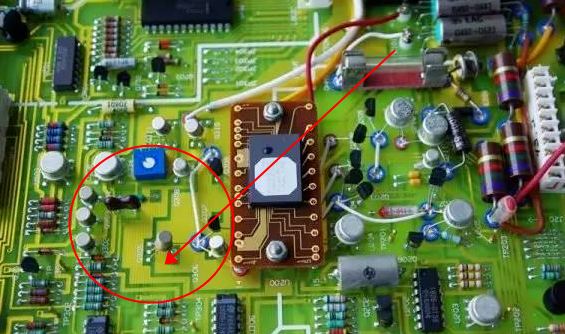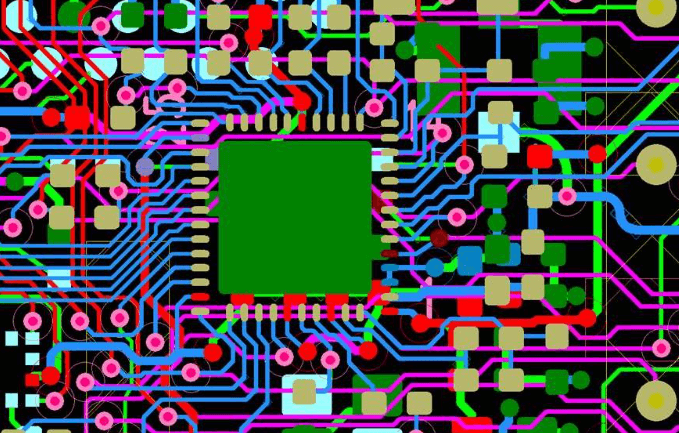PCB Screw Terminals: A Comprehensive Guide
Introduction to PCB Screw Terminals
Printed Circuit Board (PCB) screw terminals are among the most reliable and widely used connection methods in electronic design and electrical engineering. These components serve as critical interface points between PCBs and external wires, providing secure mechanical connections while maintaining excellent electrical conductivity. PCB screw terminals have become indispensable across numerous industries due to their combination of simplicity, durability, and versatility.
Screw terminals on PCBs offer several advantages over other connection methods. They allow for tool-assisted wiring without requiring specialized connectors or crimping tools, enable easy field maintenance and reconfiguration, and provide robust strain relief for connected wires. These characteristics make them particularly valuable in industrial controls, power distribution, telecommunications equipment, and consumer electronics where reliable connections are paramount.
This comprehensive guide will explore the various types of PCB screw terminals, their design considerations, installation processes, applications, and best practices for implementation. Whether you’re an electrical engineer specifying components or a technician working with existing designs, understanding PCB screw terminals is essential for creating and maintaining reliable electronic systems.
Types of PCB Screw Terminals
1. Standard Screw Terminals
Standard screw terminals represent the most basic and commonly used variant. These terminals feature:
- A screw that clamps down on a conductor inserted into the terminal block
- Typically made from brass or copper alloys with tin or nickel plating
- Available in single, dual, or multi-level configurations
- Pitch sizes ranging from 2.54mm to 10mm or more
- Current ratings from 1A to over 50A depending on size
Standard terminals are ideal for general-purpose applications where periodic connection changes might be required. Their simplicity makes them cost-effective while still providing reliable performance.

2. Barrier Strips
Barrier strips are a robust variation of screw terminals designed for higher voltage and current applications. Key characteristics include:
- Physical barriers between adjacent terminals for improved isolation
- Thicker insulation materials to prevent arcing
- Higher temperature ratings than standard terminals
- Often used in power distribution panels and industrial equipment
- Available with finger-safe designs for added protection
These terminals excel in environments where vibration or thermal cycling might compromise standard connections.
3. Pluggable Screw Terminals
Pluggable screw terminals combine the reliability of screw connections with the convenience of modular connectors. Features include:
- A screw terminal base permanently mounted to the PCB
- A mating connector housing that can be unplugged when needed
- Polarized designs to prevent incorrect mating
- Available in various pin counts and configurations
- Often used in control systems where modules need periodic replacement
This hybrid approach offers the best of both worlds for applications requiring both secure connections and modularity.
4. Spring Cage Clamp Terminals
While not strictly screw terminals, spring cage clamps serve similar purposes with some distinct advantages:
- No tools required for wire insertion (though tools may be needed for release)
- Faster installation than screw terminals
- Maintain constant pressure on conductors
- Vibration-resistant connections
- Suitable for solid and stranded wires
These are increasingly popular in applications where rapid field wiring is required or where vibration might loosen traditional screw connections.
Design Considerations for PCB Screw Terminals
Electrical Parameters
When selecting PCB screw terminals, several electrical factors must be considered:
- Current Rating: Determined by the terminal’s material and cross-sectional area. Higher current applications require larger terminals with appropriate plating to prevent oxidation.
- Voltage Rating: Dependent on the insulation material and spacing between terminals. Industrial applications may require 300V or higher ratings.
- Contact Resistance: Quality terminals maintain low resistance (<10mΩ) to prevent voltage drops and heating.
- Dielectric Strength: Important for high-voltage applications to prevent arcing between adjacent terminals.
Mechanical Parameters
Physical characteristics significantly impact terminal performance:
- Wire Size Range: Terminals must accommodate the expected wire gauges, typically specified in AWG or mm².
- Torque Specifications: Proper tightening torque ensures reliable connections without damaging threads or conductors.
- Terminal Pitch: The center-to-center distance between terminals affects PCB layout and isolation requirements.
- Mounting Style: Options include through-hole, surface mount, or edge mounting configurations.
- Material Selection: Brass and phosphor bronze are common for conductive parts, while thermoplastics or thermosets form the housing.
Environmental Considerations
Application environment dictates specific terminal requirements:
- Temperature Range: Industrial terminals may need to withstand -40°C to +105°C or higher.
- Ingress Protection (IP) Rating: Outdoor or harsh environment applications may require IP65 or higher.
- Chemical Resistance: Important for applications exposed to oils, solvents, or cleaning agents.
- Vibration Resistance: Critical for automotive, aerospace, or industrial machinery applications.
Installation and Wiring Best Practices
Proper Installation Techniques
Correct installation ensures reliable long-term performance:
- PCB Preparation:
- Ensure pad sizes match terminal specifications
- Verify hole sizes for through-mount terminals
- Clean PCB surface before soldering
- Soldering Process:
- Use appropriate temperature profiles to prevent housing damage
- Avoid excessive solder that could wick into terminal areas
- Ensure complete solder fillets for mechanical strength
- Mechanical Support:
- Consider strain relief for cables with significant weight
- Use supporting brackets for large terminal blocks
- Allow sufficient clearance for wire bending

Wiring Procedures
Proper wiring techniques maximize connection reliability:
- Wire Preparation:
- Strip insulation to recommended length (typically 7-10mm)
- Twist stranded wires gently to prevent fraying
- For fine-stranded wires, consider ferrules for best results
- Connection Method:
- Insert wire fully into terminal chamber
- Tighten screw to specified torque (usually 0.5-0.6 Nm for small terminals)
- Avoid over-tightening which can damage wires or threads
- Quality Verification:
- Perform gentle tug test to verify secure connection
- Check for proper seating of all conductors
- Verify no stray strands outside the terminal
Maintenance Considerations
Regular maintenance preserves connection integrity:
- Periodic Inspection:
- Check for signs of oxidation or corrosion
- Verify screw tightness (especially after thermal cycling)
- Look for discoloration indicating overheating
- Cleaning Procedures:
- Use appropriate contact cleaners for oxidation
- Avoid abrasive materials that could damage plating
- Ensure terminals are dry before re-energizing
- Replacement Guidelines:
- Replace terminals showing signs of arcing or melting
- Upgrade terminals if current requirements increase
- Consider replacement if screws lose tightening torque
Applications of PCB Screw Terminals
Industrial Control Systems
Screw terminals are ubiquitous in industrial environments due to their reliability:
- PLC (Programmable Logic Controller) I/O connections
- Motor control and power distribution
- Sensor and actuator interfaces
- Control panel wiring
Their tool-accessible nature simplifies field maintenance in these critical applications.
Power Electronics
Power conversion and distribution systems frequently employ screw terminals:
- Power supply inputs and outputs
- Inverter and converter connections
- Battery management systems
- Renewable energy systems (solar, wind)
The ability to handle higher currents makes them ideal for these applications.
Telecommunications
Telecom equipment utilizes screw terminals for:
- Distribution frame connections
- Network equipment interfaces
- Grounding and bonding connections
- Backplane wiring
Their vibration resistance benefits installations subject to mechanical stress.
Consumer and Commercial Electronics
Even consumer products benefit from screw terminal advantages:
- Appliance controls
- HVAC systems
- Lighting control systems
- Security and access control equipment
The balance of cost and reliability makes them suitable for these applications.
Transportation Electronics
Vehicle systems employ specialized screw terminals:
- Automotive control modules
- Avionics equipment
- Railway signaling systems
- Marine electronics
These applications often require enhanced vibration-resistant designs.
Advantages and Limitations
Key Advantages
PCB screw terminals offer numerous benefits:
- Reliability: Properly installed terminals provide durable, long-lasting connections.
- Flexibility: Accommodate various wire types and sizes within specified ranges.
- Serviceability: Connections can be easily modified or repaired in the field.
- Cost-Effectiveness: Generally less expensive than many specialized connectors.
- No Special Tools Required: Basic screwdrivers suffice for most installations.
- Visual Verification: Connections can be inspected without disassembly.
Potential Limitations
Certain limitations should be considered:
- Size Requirements: Larger than some alternative connection methods.
- Installation Time: Slower to connect than push-in or IDC terminals.
- Vibration Sensitivity: Standard versions may loosen under severe vibration.
- Skill Dependent: Proper installation requires appropriate technique.
- Not Ideal for High-Density Applications: Pitch requirements limit miniaturization.
Future Trends in PCB Screw Terminal Technology
The screw terminal market continues to evolve with several emerging trends:
Miniaturization
Advancements in materials and manufacturing enable smaller terminals with maintained performance:
- Higher current capacity in reduced footprints
- Fine-pitch screw terminals for dense PCB designs
- Surface-mount versions with improved mechanical strength
Enhanced Materials
New material combinations improve performance:
- High-temperature plastics for harsh environments
- Improved contact platings for better conductivity and corrosion resistance
- Composite materials reducing weight while maintaining strength
Smart Features
Integration of monitoring capabilities:
- Terminals with built-in connection sensing
- Temperature monitoring for predictive maintenance
- Force sensors to verify proper tightening
Automated Installation
Developments supporting manufacturing automation:
- Pick-and-place compatible packaging
- Vision-assisted robotic screw driving
- Automated wire insertion systems
Environmental Focus
Sustainable design initiatives:
- Lead-free and RoHS compliant materials
- Recyclable terminal housings
- Reduced material usage through optimized designs
Conclusion
PCB screw terminals remain a fundamental component in electronic design, offering an optimal balance of reliability, versatility, and cost-effectiveness. From simple single-pole connections to complex multi-level terminal blocks, these components serve critical roles across countless applications. Understanding the various types, proper selection criteria, and correct installation techniques enables engineers and technicians to create robust, maintainable electronic systems.
As technology advances, screw terminals continue to evolve, incorporating new materials, smarter features, and improved designs to meet the demands of modern electronics. While alternative connection methods have their place in specific applications, the screw terminal’s combination of simplicity and effectiveness ensures its continued prominence in electronic design.
By following industry best practices and staying informed about new developments, professionals can leverage PCB screw terminals to create reliable interconnections that stand the test of time in even the most demanding environments. Whether designing new systems or maintaining existing installations, a thorough understanding of PCB screw terminals is an invaluable asset in the field of electrical and electronic engineering.







